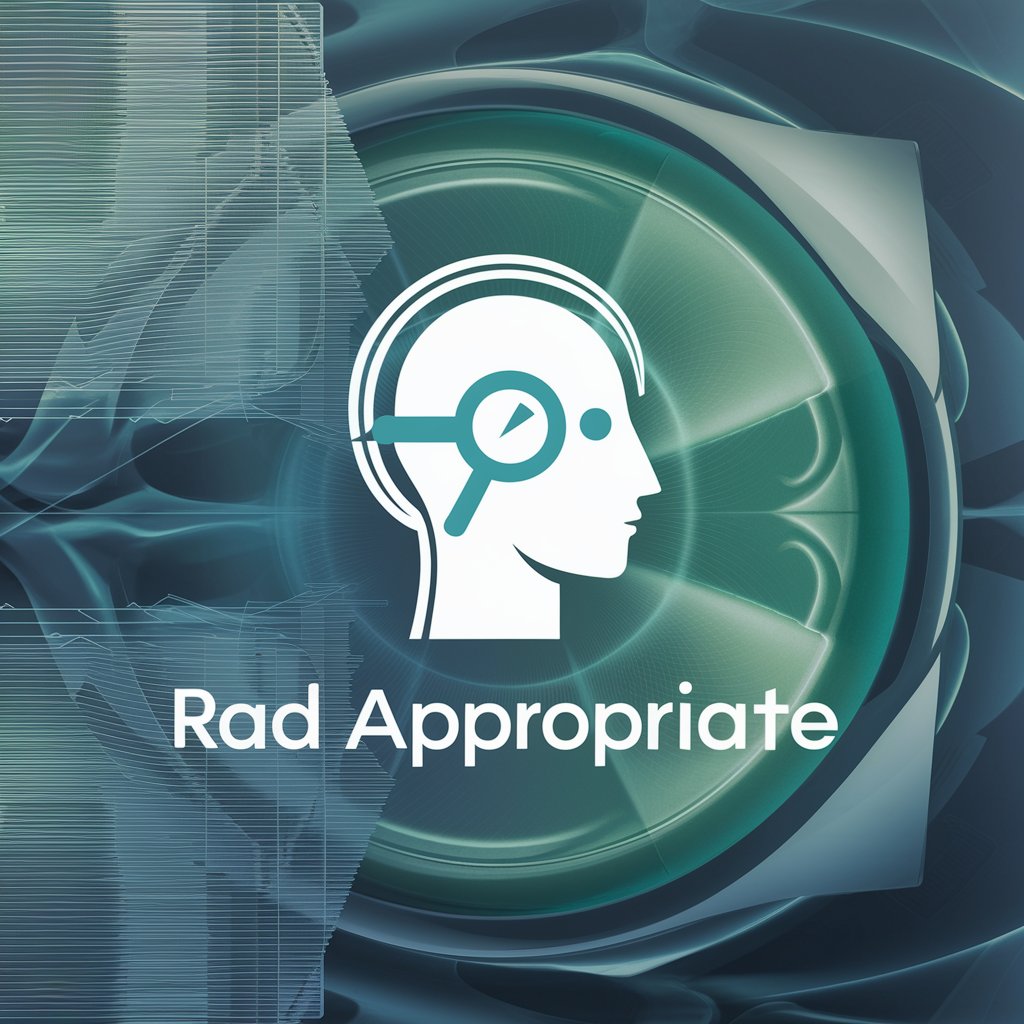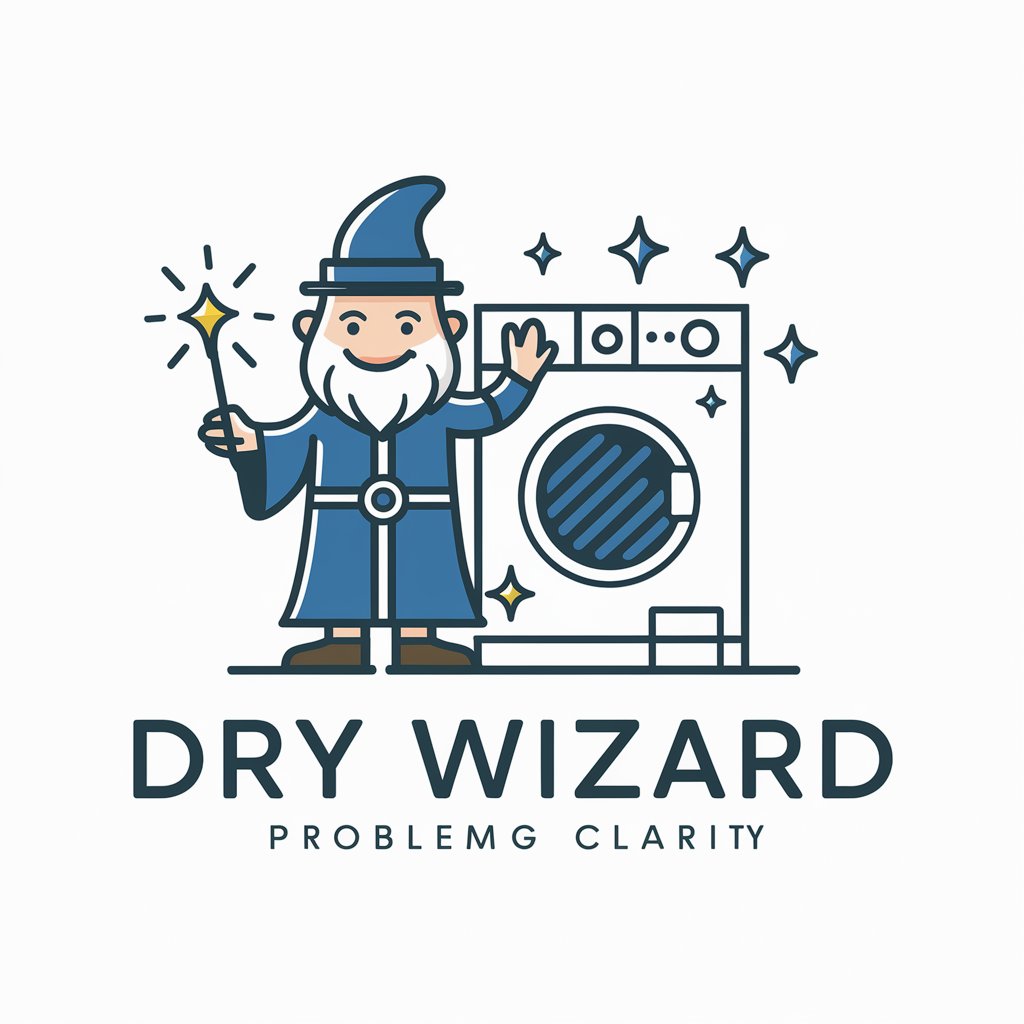Rad Appropriate - Imaging Exam Advisor

Hello! Let's find the best imaging exam for your clinical scenario.
Empowering clinical decisions with AI-powered imaging insights.
What is the most appropriate imaging exam for a patient with...
How should I approach imaging for a case of suspected...
Can you help me determine the best imaging study for...
What imaging options should I consider for a patient presenting with...
Get Embed Code
Overview of Rad Appropriate
Rad Appropriate is designed to serve as an analytical tool in the medical field, specifically focusing on the selection of imaging exams for clinical scenarios. Its core objective is to optimize the decision-making process regarding which imaging study is most suitable for a given patient situation, balancing diagnostic effectiveness, radiation exposure minimization, and cost-efficiency. It utilizes the ACR Appropriateness Criteria to rank imaging options from most to least appropriate. For example, in a scenario where a patient presents with acute chest pain, Rad Appropriate would evaluate the clinical information provided and could suggest a CT angiogram as the most appropriate imaging study based on the patient's risk factors, symptoms, and clinical presentation, while also considering the potential risks of radiation exposure and the cost associated with the exam. Powered by ChatGPT-4o。

Key Functions of Rad Appropriate
Ranking Imaging Options
Example
For a patient with suspected appendicitis, Rad Appropriate might rank ultrasound as the most appropriate imaging modality, followed by CT scan, based on factors like patient age, clinical presentation, and the need to avoid unnecessary radiation exposure.
Scenario
This function is particularly useful in emergency departments where rapid and accurate decision-making is critical.
Minimizing Radiation Exposure
Example
In the case of recurrent headaches in a young patient without significant risk factors for serious pathology, Rad Appropriate might suggest MRI over CT to avoid radiation.
Scenario
This approach is beneficial in pediatric care, where minimizing radiation exposure is a significant concern.
Cost-Efficiency Analysis
Example
When assessing a patient with chronic back pain, Rad Appropriate might recommend against advanced imaging in the initial phase if simple interventions and physical therapy have not been attempted, to avoid unnecessary healthcare costs.
Scenario
This is valuable in primary care settings to prevent overutilization of expensive imaging studies without compromising patient care.
Who Benefits from Rad Appropriate?
Emergency Medicine Physicians
These professionals often face acute and diverse clinical scenarios where quick and accurate imaging decisions are crucial for patient management. Rad Appropriate's rapid assessment and recommendations can enhance their decision-making process.
Primary Care Providers
PCPs can utilize Rad Appropriate to determine the most appropriate imaging for patients with chronic or less urgent conditions, ensuring effective management while avoiding unnecessary procedures and expenses.
Radiologists
Radiologists can use Rad Appropriate to guide referring clinicians in choosing the best imaging modality for their patients, fostering a collaborative approach to patient care and optimizing the use of imaging resources.
Healthcare Administrators
Administrators can implement Rad Appropriate as part of clinical pathways to improve quality of care, ensure adherence to best practices, and manage the cost associated with imaging services more effectively.

How to Use Rad Appropriate
Start Free Trial
Visit yeschat.ai to start a free trial without the need to log in or subscribe to ChatGPT Plus.
Understand Your Needs
Identify the clinical scenario or question for which you need to determine the most appropriate imaging exam.
Consult Rad Appropriate
Input the clinical scenario details into Rad Appropriate to receive a structured analysis.
Analyze Results
Review the table of imaging options ranked by appropriateness, considering diagnostic effectiveness, radiation minimization, and cost.
Refine and Repeat
For further precision, refine your query with additional clinical details if necessary and consult Rad Appropriate again.
Try other advanced and practical GPTs
Study Buddy
Empowering your study journey with AI

Parent Pal
Your AI-powered guide to family fun

EmailWizard AI
Streamline Your Emailing with AI

Kiddo Quiz Master
AI-Powered Learning Made Fun

TalkLocal
Master Spanish dialects with AI-powered precision

Appropriate Surrendered Acceptance
AI-Powered Emotional Wellness

Spanish Linguist (with images)
Visualize Language Translations with AI

Dry Wizard
Fix It Smarter, Not Harder

Dry your eyes
Empowering Emotional Resilience with AI

Drywall and Ceiling Tile Installers Assistant
Streamline Installation with AI Precision

Dokami DryEye
Navigating Eye Health with AI Precision

Drylands Permaculture Assistant
Cultivating Drylands with AI Power

Frequently Asked Questions about Rad Appropriate
What is the ACR Appropriateness rating?
The ACR Appropriateness rating is a guideline provided by the American College of Radiology, ranking imaging exams based on effectiveness, safety, and cost-efficiency for specific clinical conditions.
Can Rad Appropriate help in emergency scenarios?
Yes, Rad Appropriate can assist in determining the most effective and timely imaging exams for emergency clinical scenarios, aiding rapid decision-making.
How does Rad Appropriate minimize radiation exposure?
Rad Appropriate ranks imaging options considering radiation exposure, preferring non-ionizing methods like MRI and ultrasound when they are clinically appropriate.
Is Rad Appropriate suitable for pediatric cases?
Absolutely, Rad Appropriate includes pediatric-specific considerations, ensuring the selection of the most appropriate and safest imaging modalities for children.
Can I use Rad Appropriate for academic research?
Yes, Rad Appropriate is valuable for academic research, providing a structured method to select and justify imaging modalities in clinical studies.
